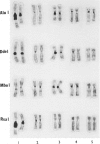Abstract
The heteromorphisms of C-band regions of human chromosomes are evaluated by means of restriction endonucleases AluI, DdeI, MboI, and RsaI. Every chromosome exhibits heteromorphic markers of the C-band regions except chromosome 8. Each enzyme was found to be highly characteristic in its staining profile, a result that clearly suggests the diversity of heterochromatin. The inherent C-band-region heterochromatin variability that is revealed by these enzymes provides a valuable tool in identifying markers as compared with other previously described techniques.
Full text
PDF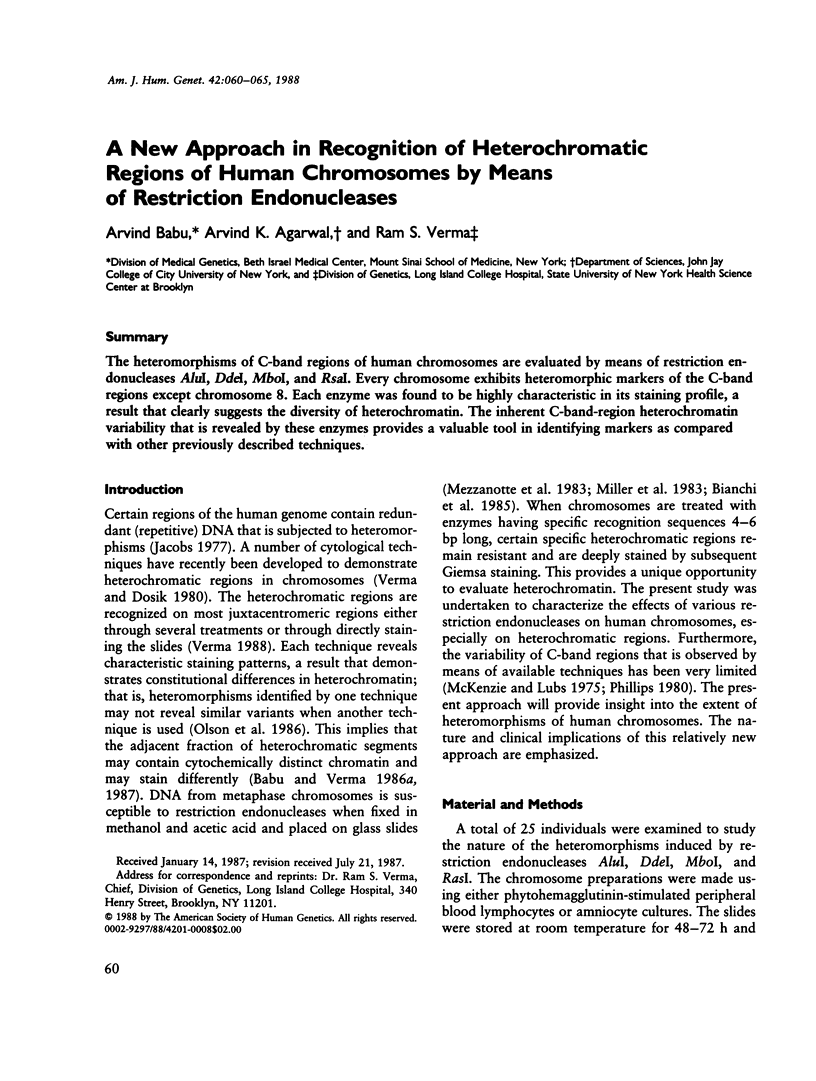
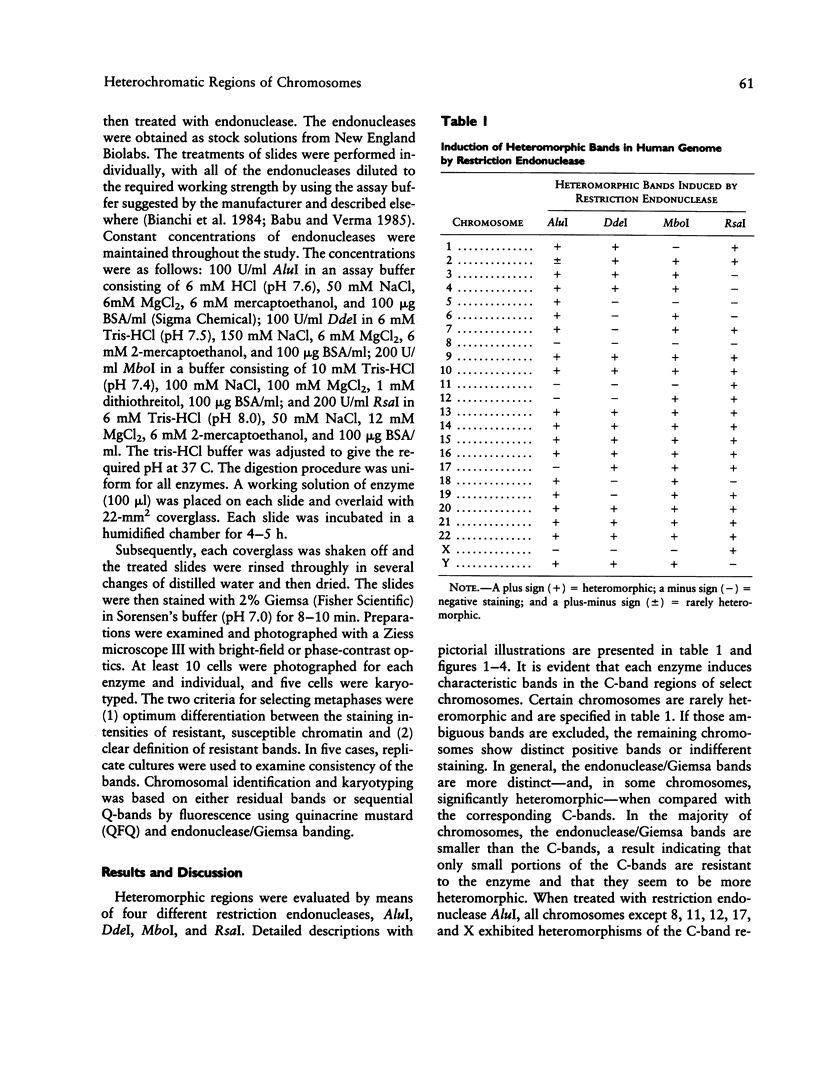
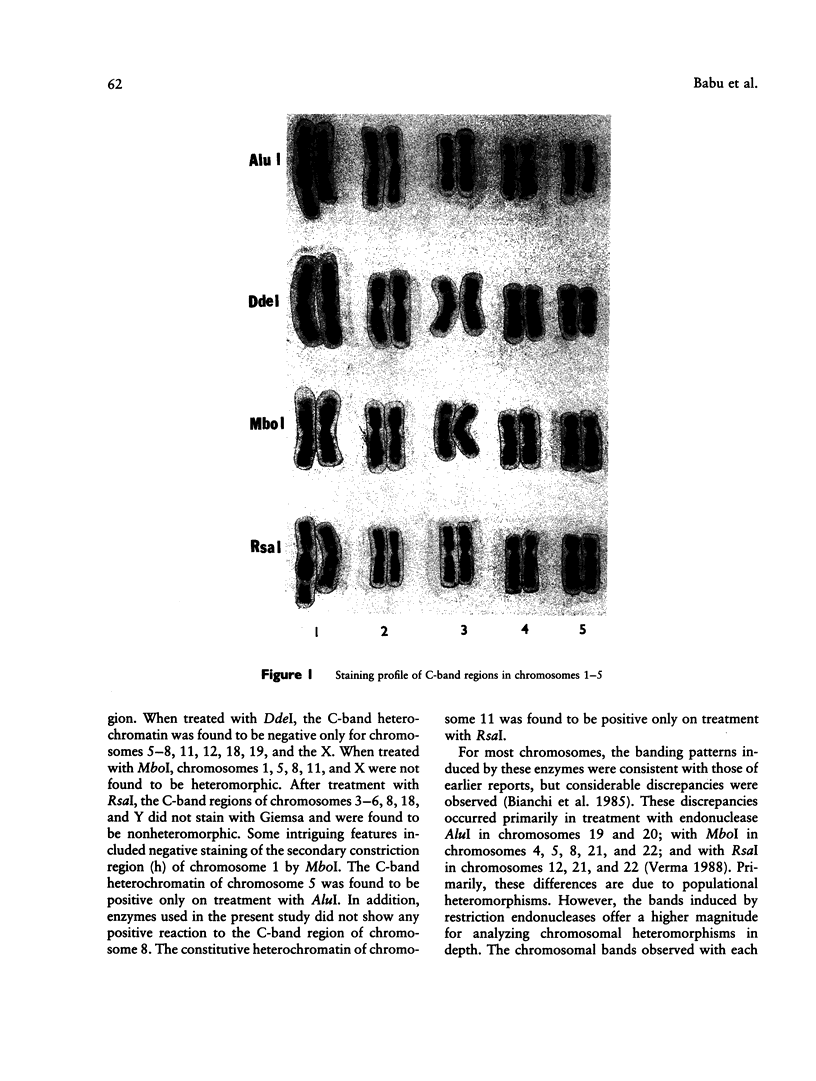
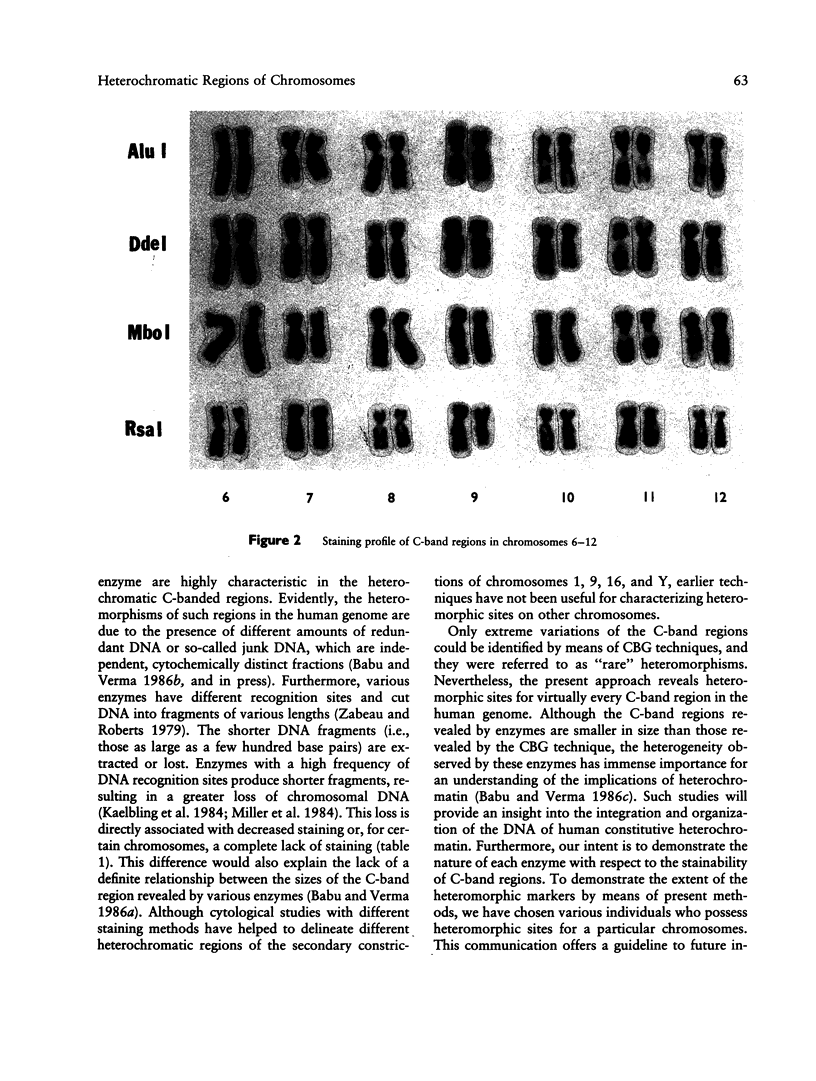
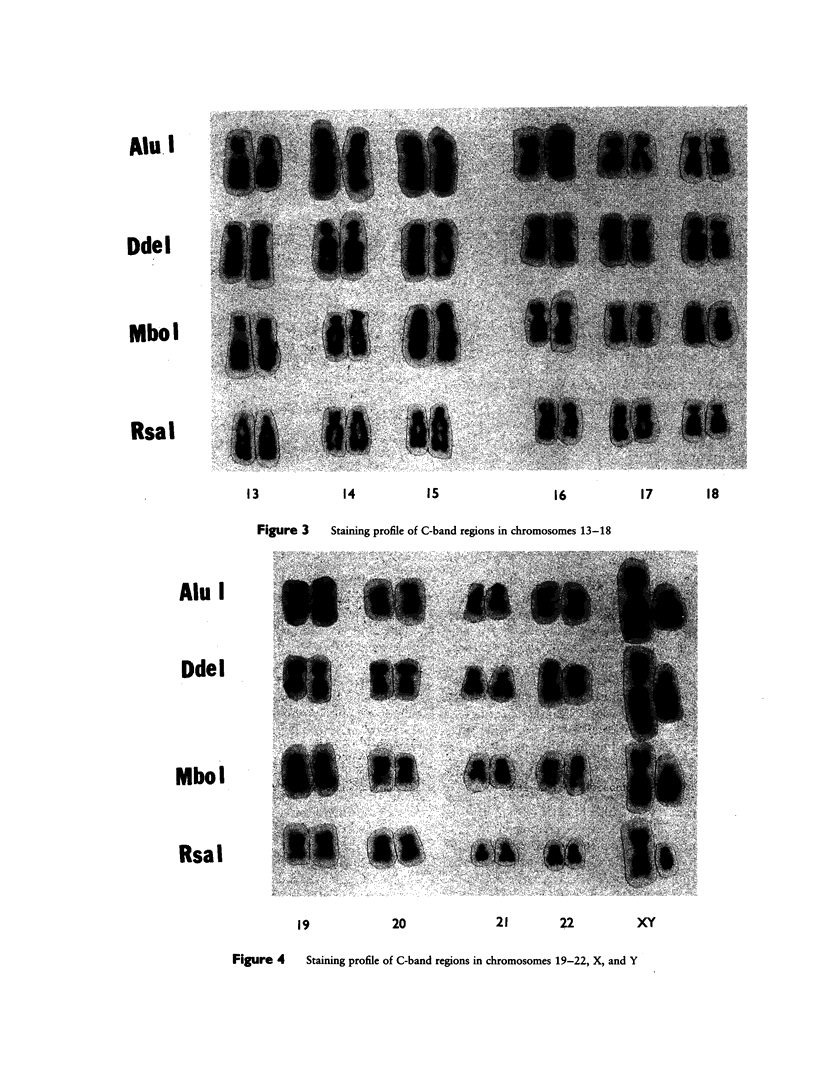
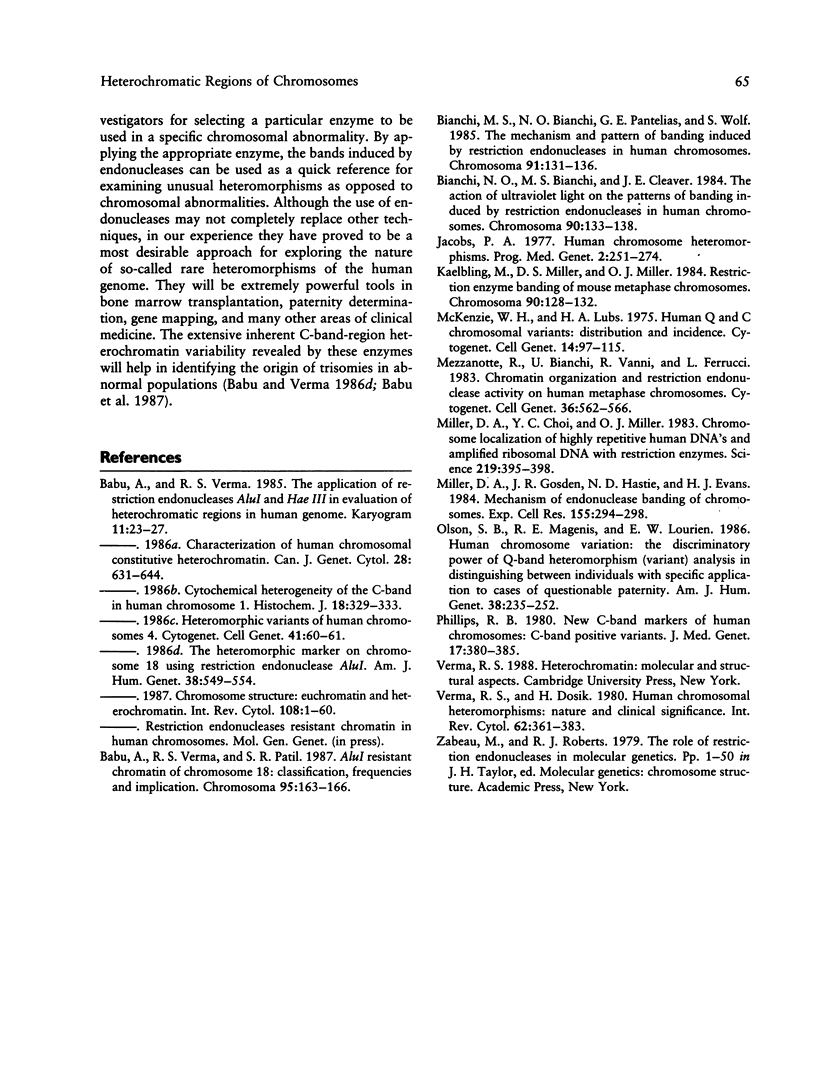
Images in this article
Selected References
These references are in PubMed. This may not be the complete list of references from this article.
- Babu A., Verma R. S., Patil S. R. AluI-resistant chromatin of chromosome 18: classification, frequencies and implications. Chromosoma. 1987;95(3):163–166. doi: 10.1007/BF00330345. [DOI] [PubMed] [Google Scholar]
- Bianchi M. S., Bianchi N. O., Pantelias G. E., Wolff S. The mechanism and pattern of banding induced by restriction endonucleases in human chromosomes. Chromosoma. 1985;91(2):131–136. doi: 10.1007/BF00294057. [DOI] [PubMed] [Google Scholar]
- Bianchi N. O., Bianchi M. S., Cleaver J. E. The action of ultraviolet light on the patterns of banding induced by restriction endonucleases in human chromosomes. Chromosoma. 1984;90(2):133–138. doi: 10.1007/BF00292450. [DOI] [PubMed] [Google Scholar]
- Jacobs P. A. Human chromosome heteromorphisms (variants). Prog Med Genet. 1977;2:251–274. doi: 10.1016/0378-1119(77)90004-x. [DOI] [PubMed] [Google Scholar]
- Kaelbling M., Miller D. A., Miller O. J. Restriction enzyme banding of mouse metaphase chromosomes. Chromosoma. 1984;90(2):128–132. doi: 10.1007/BF00292449. [DOI] [PubMed] [Google Scholar]
- McKenzie W. H., Lubs H. A. Human Q and C chromosomal variations: distribution and incidence. Cytogenet Cell Genet. 1975;14(2):97–115. doi: 10.1159/000130330. [DOI] [PubMed] [Google Scholar]
- Mezzanotte R., Bianchi U., Vanni R., Ferrucci L. Chromatin organization and restriction endonuclease activity on human metaphase chromosomes. Cytogenet Cell Genet. 1983;36(3):562–566. doi: 10.1159/000131973. [DOI] [PubMed] [Google Scholar]
- Miller D. A., Choi Y. C., Miller O. J. Chromosome localization of highly repetitive human DNA's and amplified ribosomal DNA with restriction enzymes. Science. 1983 Jan 28;219(4583):395–397. doi: 10.1126/science.6294832. [DOI] [PubMed] [Google Scholar]
- Miller D. A., Gosden J. R., Hastie N. D., Evans H. J. Mechanism of endonuclease banding of chromosomes. Exp Cell Res. 1984 Nov;155(1):294–298. doi: 10.1016/0014-4827(84)90793-6. [DOI] [PubMed] [Google Scholar]
- Olson S. B., Magenis R. E., Lovrien E. W. Human chromosome variation: the discriminatory power of Q-band heteromorphism (variant) analysis in distinguishing between individuals, with specific application to cases of questionable paternity. Am J Hum Genet. 1986 Feb;38(2):235–252. [PMC free article] [PubMed] [Google Scholar]
- Phillips R. B. New C band markers of human chromosomes: C band position variants. J Med Genet. 1980 Oct;17(5):380–385. doi: 10.1136/jmg.17.5.380. [DOI] [PMC free article] [PubMed] [Google Scholar]
- Verma R. S., Dosik H. Human chromosomal heteromorphisms: nature and clinical significance. Int Rev Cytol. 1980;62:361–333. doi: 10.1016/s0074-7696(08)61903-8. [DOI] [PubMed] [Google Scholar]





